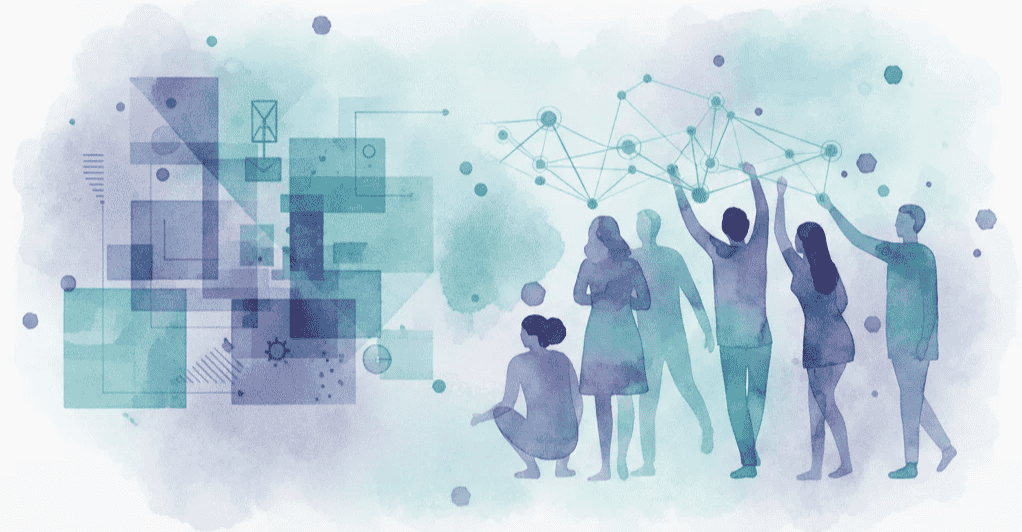We’ve all seen it happen in any growing organisation. There’s a point where the processes that once provided stability start to feel more like a straitjacket. In the world of work we navigate today, holding onto legacy HR systems isn’t just standing still; it’s actively taking a step backwards.
Think of it like trying to modernise a beautiful old hotel while it’s full of guests. You can’t just rip everything out. The goal is to integrate smarter systems with care, enhancing the human element of your business, not replacing it.
In leadership meetings across the country, the question isn’t usually if we should modernise, but when. The truth is, every day we delay is another day we’re reinforcing inefficiency. So, what if we changed the question entirely? What if we saw automation not as senior leaders losing control, but as a direct route to giving everyone more clarity, efficiency and genuine empowerment?
Let’s unpack why getting your automation strategy right isn’t just about a technology upgrade. It’s a genuine cultural shift, one that can forge loyalty, unlock creativity, and put your people in a position where they can truly excel.
This isn’t about processes, it’s about people
Too many people still hear ‘automation’ and think of a cold, mechanical tool for cutting headcounts or simply speeding up workflows. But when it’s done properly, automation isn’t about taking people out of the picture. It’s about unlocking their true potential.
I’ve seen it time and again. In the automotive sector, for example, the production line is at its best only when its people are freed from mind-numbing repetition and given the agency to make system improvements. In hospitality, the best guest experiences don’t come from a slick digital check-in; they come from staff who are free to connect with people because technology is handling the drudgery behind the scenes.
Right now, your people are likely losing hours to filling out endless forms, wrestling with manual data entry, or chasing approvals down labyrinthine email chains. These aren’t just minor annoyances. They are the tasks that kill enthusiasm, stifle a person’s capacity for innovation, and slowly erode morale.
When you invest in the right automation, you’re not just buying better tools. You’re investing directly in your team. People who feel supported by their systems are more motivated, more effective, and far more likely to stick with you. In a climate where retaining talent is everything, that isn’t a soft benefit; it’s a core strategic advantage.
So, what’s really holding leaders back?
Even with such a clear business case, you’ll still encounter resistance. Let’s be honest, that resistance is rarely about the tech itself. It’s about fear.
For some, the organisation’s current web of systems is so tangled that the thought of unravelling it is completely overwhelming. For others, there’s a real worry that a new rollout could spark chaos. Will the transition cause critical downtime? Will employees revolt? What if we spend a fortune and the promised gains simply never appear?
These are valid concerns. Yet, clinging to outdated processes carries its own set of very real risks: sluggish workflows, disengaged staff, and the creeping threat of being outpaced by more agile competitors. In the long run, those costs are always higher than a well-planned transition.
A smarter way to begin: practical first steps
So, how do you move towards automation without sparking a panic or disrupting the entire culture? The key is a structured, people-first approach.
Start with the clear wins
Look for the obvious points of friction in your daily operations. Which tasks involve high volumes, simple rules, or repetitive manual work? Automating things like leave approvals or shift scheduling can provide immediate relief and, crucially, build confidence and goodwill across the team.
Bring your people on the journey from day one
Want to guarantee resistance? Impose a new system from on high with no consultation. The quickest way to get buy-in is to involve your people from the very beginning. Ask for their input, genuinely listen to their concerns, and ensure they understand that automation is there to support them, not to replace them. When people feel they have a stake in the outcome, they become advocates for change.
Choose what’s right for your organisation
Don’t just chase the latest shiny object or copy what a competitor has done. Every business has a unique pulse. In sectors like hospitality or retail, where staff turnover can be a challenge, you might need to prioritise systems that are incredibly easy to use and mobile-friendly. In a professional services firm, seamless integration with existing project management platforms might be the top priority.
Don’t be afraid to ask for help
Very few businesses have the in-house capacity to manage a major systems overhaul alone. Bringing in digital consultants who’ve done this before can help you navigate the process, steer clear of common pitfalls, and tailor a solution to your specific needs. It’s not a sign of weakness; it’s smart leadership.
The quiet cost of doing nothing
There’s a corrosive, hidden cost to waiting. Every day that your team wrestles with inefficient processes is another day where time is wasted, frustration builds, and the risk of burnout climbs. These small, daily losses add up to missed opportunities, sinking engagement, and, ultimately, people walking out the door.
And then there’s the bigger picture. Your competitors who embrace smart automation will work faster, serve their customers better, and become magnets for the very talent you’re desperately trying to hold onto.
In a market that’s constantly moving, standing still is the most dangerous move of all.
It’s a cultural shift, not just a tech project
It’s time we stopped talking about automation as a collection of tools and started seeing it for what it is: a new mindset. It’s about fundamentally redesigning work so that our people can focus on what they do best: developing ideas, building relationships, serving clients, and driving growth.
Think of your organisation as a high-end restaurant kitchen. Automation isn’t the head chef. It’s the highly efficient prep team that ensures all the ingredients are ready, the porters who keep the workspace spotlessly clean, and the seamless ordering system that keeps the pantry stocked. It creates the conditions for your real stars, your chefs, to create something extraordinary.
When it’s implemented with purpose and care, automation doesn’t remove the human element. It makes space for it to flourish.
So, where do you go from here? The time is now.
Automation is no longer a futuristic concept; it is actively shaping the future of work in every sector. The choice for us as leaders is really quite simple: adapt now from a position of strength, or be forced to play catch-up later.
Start with one meaningful change. Invite your team into the process. Choose solutions that serve both your strategic goals and your people. This is how you build a resilient, future-ready organisation, one that doesn’t just weather change but uses it to become stronger.
Because the future of work isn’t just about being digital. It’s about being profoundly and unapologetically human.






